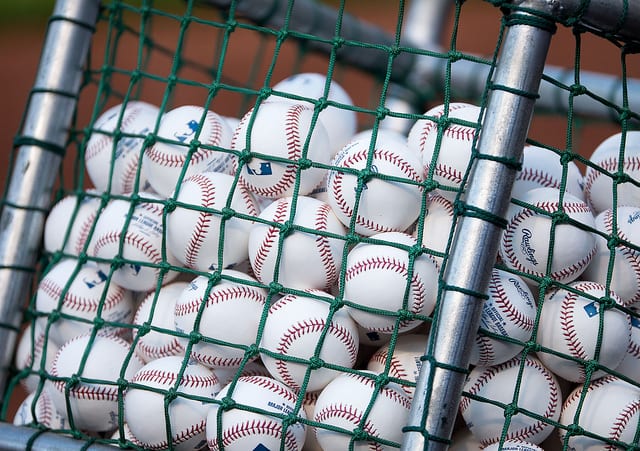
The Houston Astros were triumphantly crowned 2017 World Series champions one week ago, and with their champagne celebrations and victory parade in the books, it’s time for every other organization and fandom to look toward the near future. Except perhaps the Los Angeles Dodgers, who are likely still grieving after having woefully ended up on the wrong side of history once again following one of the closest, most pulse-pounding championship series of all time. That’s more than understandable – it’s perfectly harmless considering their particularly auspicious position. While nearly everyone else will scramble to align potential deals with the upcoming free agent crop, the Dodgers should have their pick of the litter considering their vast financial resources and favorable status as a perennial contender, cementing them as the 2018 favorites if they didn’t already unanimously carry that label.
See, the scary thing that makes Los Angeles so fearsome is that, despite possessing the largest payroll in baseball, they really haven’t spent a fraction of what they will soon be capable of dishing out. Their MLB-leading $242 million Opening Day payroll can trick some into believing that the Dodgers essentially purchased a National League pennant, but don’t be deceived. A considerable portion of that money is the residual aftermath of several long-term, mistake signings of aging, underwhelming or one-season rental players who weren’t even on the World Series roster. Carl Crawford’s disaster contract of $21 million per year significantly inflates that total, but he was cut in the summer of 2016. Thanks to the emergence of Cody Bellinger, Adrian Gonzalez’s $21.5 per year is now a liability. Trading for Curtis Granderson at the July deadline didn’t net L.A. anything except a $15 million benchwarmer. Scott Kazmir, $16 million. Yu Darvish, $11 million. Andre Ethier, $17.5 million. All of this money is coming off the books with minimal drawbacks in the next two years, leaving the Dodgers with options. For an organization possessing arguably the strongest young core of position players in baseball, options are a scary prospect for any of L.A.’s opponents.
The same can be said for the Dodgers’ American League (AL) equivalent, the New York Yankees. Featuring a young roster with a frightening parallel to the New York dynasty of the late 1990s – a dominant closer, a multi-faceted catcher and the MLB’s new poster boy – and expecting more electric young prospects such as Clint Frazier and Gleyber Torres to emerge next season, the appropriately dubbed “Baby Bombers” finally ditched a decade’s worth of damage wrought by poor free agent signings in favor of the fastest rebuild in MLB history. What’s more, like the Dodgers, a good chunk of their Opening Day payroll of $201.5 million is owed to aging veterans who only served a minimal supporting role in 2017, such as Todd Frazier, Matt Holliday, Chase Headley and C.C. Sabathia. With those toxic contracts now off the payroll and others being removed next year, the Yankees possess arguably more money than God and have barely scratched the surface of their bottomless funds during the last few seasons – essentially, they’re still just biding their time. They’re still waiting to actually compete. You know, the near-AL pennant winner.
Here’s the catch: the next two free agency periods directly align with all this financial liberation and 2018 in particular features arguably the most deep pool of talent ever seen in one winter market. Over the next two years, these players will become free agents: Jake Arrieta, Josh Donaldson, Eric Hosmer, Adam Jones, Dallas Keuchel, Craig Kimbrel, Lorenzo Cain, Manny Machado, Andrew Miller and the potential $400 million man himself, Bryce freakin’ Harper. With the Dodgers and Yankees holding complete financial control, they essentially get first pick of whoever they want, supplementing their championship roster with the best all-stars money can buy. Imagine a Yankee team featuring Harper, Machado, Arrieta and Miller in addition to Aaron Judge, Aaron Sanchez and Masahiro Tanaka, or a Dodgers team with those same players rounding out Bellinger, Justin Turner and Clayton Kershaw. You’ve just pictured the next decade of baseball. In a league with no salary cap, only other big market teams with a core of young stars under extended club control, such as the Boston Red Sox or Chicago Cubs, will possibly be able to keep pace.
The MLB is on a collision course to become the next NBA, where competition is monopolized and small market organizations are rendered irrelevent. It’s been fun, but it’s inevitable that this era of improbable underdog baseball championships will disappear in favor of a return to a logical routine in which money tips the scales. Welcome to the future.

